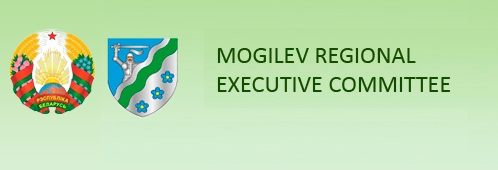April 26 - Day of the Chernobyl tragedy: the proportion of radioactively contaminated lands is 25% of the total area of the Mogilev region
Over 35 years after the accident at the Chernobyl nuclear power plant, as a result of natural processes of radioactive decay of radionuclides and due to the application of large-scale radiation protection measures, the radiation situation has significantly improved. At the same time, the proportion of radioactively contaminated lands is 25% of the total area of the region. There are 660 settlements on this territory, in which 10% of the region's population lives.
According to the Ministry of Health of the Republic of Belarus, in the settlements of the region, the average annual radiation dose of residents does not exceed the legally established permissible level - 1 mSv. Over the past 5 years, it has decreased on average by 31%. At the same time, in some of the settlements, it is necessary to continue work to ensure the radiation safety of the population.
This is a conversation with Vyacheslav Shulyak, head of the radiation hygiene department of the Mogilev Regional Center for Hygiene and Epidemiology, Vyacheslav Shulyak.
- To what extent is radiation monitoring carried out in the Dnieper region?
- A radiation monitoring system has been created and is effectively functioning in the region. It is represented by radiological subdivisions of various organizations and enterprises of the district and regional levels. In accordance with the established rules, all agricultural products are monitored in the contaminated area, including feed for animals and their rations. At processing plants, raw materials and finished products produced on contaminated lands with radionuclides are subject to a 3-stage radiation control: incoming control, during the processing of raw materials, control of finished products. At meat processing plants, cattle coming from agricultural organizations located in such territories are subject to radiation control.
- And what is the result?
- In the regional sanitary and epidemiological service, radiation and hygienic monitoring in personal subsidiary plots is carried out by 21 centers of hygiene and epidemiology. The analysis of the results of radiation monitoring shows that all food products produced by the enterprises meet hygienic standards in terms of the content of radionuclides. Thus, the actual content of cesium-137 radionuclides in dairy products sold to the population is tens of times lower than permissible levels. No excess of permissible levels of radionuclide content in meat and meat products, vegetables, fruits, garden berries and other agricultural products was noted. Samples of food products above the permissible levels for the content of radionuclides produced in personal subsidiary plots are not registered. There is a decrease in the average annual doses of internal exposure of the population.
- As you know, nature has also suffered from radiation ...
- The Chernobyl accident led to significant pollution of forests. Despite the constant decrease in the radiation dose rate in the forests due to radiation decay (2% per year), the migration of radionuclides deep into the soil, the intensity of the transition of radionuclides from the soil to wild forest products remains high, therefore, in the coming years, a significant decrease in the content of radionuclides in food products is not expected. the woods.
According to radiation monitoring data, in the past year, 14% of samples of forest gifts delivered by the population to the CGE laboratory (mushrooms, berries, game) contained radionuclides above permissible levels. Almost all food products of the forest (mushrooms, berries, game) do not meet the standards in the forest areas adjacent to the resettlement zones. The laboratories of the centers of hygiene and epidemiology continue to receive food samples from the population and conduct their study for the content of radionuclides. Radiation control of food products for own consumption is carried out by the centers of hygiene and epidemiology free of charge.
- But there are other types of radiation ...
- When planning measures to ensure the radiation safety of the population, the impact on humans of other types of radiation: professional, natural, medical, is taken into account.
Analysis of the annual collective dose of irradiation of the population of the region shows that in the structure of irradiation, regardless of the presence of post-accident Chernobyl contamination, natural (82%) and medical (17.5%) sources of ionizing radiation occupy a leading place. In natural irradiation, most of it falls on radon and its decay products.
In order to compensate for the radiation doses from the Chernobyl accident, measures are being taken in the region to reduce the radiation doses to the population from natural radioactive sources. Measurements of the release of radon from the soil surface on land plots for building construction and an assessment of the content of radon and its decay products in the air of built premises are carried out. Every year, low-dose X-ray and other radiological equipment is purchased for healthcare organizations, which makes it possible to improve the diagnosis and treatment of diseases, while reducing the exposure of patients to ionizing radiation.
- What is the effectiveness of this work?
- Since the accident, the most important problems of radiation protection of the population have been resolved. Taking into account the long-term nature and scale of radioactive contamination, the State program for overcoming the consequences of the disaster at the Chernobyl nuclear power plant for 2021-2025 has now been approved, according to which it is planned to continue work to maintain the achieved level of social and radiation protection of the population and ensure life with minimal restrictions on radiation factor.
Written by: mogilev-region.gov.by









